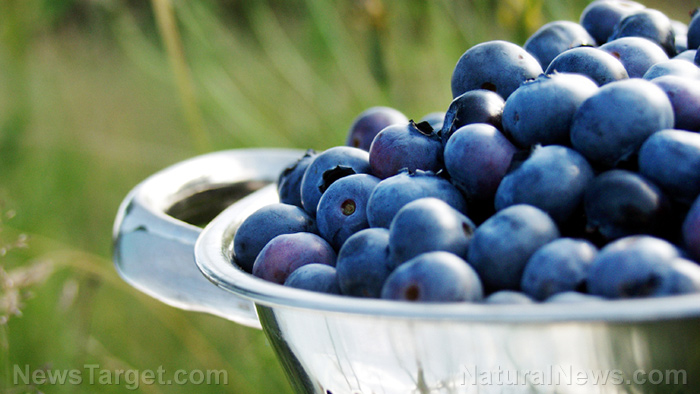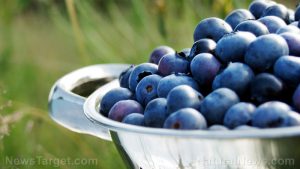
Proanthocyanidins sources, health benefits and uses
Tuesday, September 19, 2017 by Frances Bloomfield
http://www.naturalpedia.com/proanthocyanidins-sources-health-benefits-and-uses.html

Proanthocyanidins are polyphenols found in plants that are chemically classified as oligomeric flavonoids. These were first discovered in 1936 by French scientist Jacque Masquelier, and were at one point going by the name “vitamin P”. The rich blue-violet or red hues of certain plants can be attributed to their abundance of proanthocyanidins. More than just lending these plants their signature colors, proanthocyanidins are known to possess impressive antioxidant effects that significantly inhibit the oxidation of molecules and reduce the damage that can result from this process. Beyond that, there are many more health benefits to be gained from proanthocyanidins.
While present in many varieties of plants, the best sources of proanthocyanidins are pine bark and grape skin and seeds. Cranberries, black currant, green tea, and bilberries are believed to be good sources of proanthocyanidins as well. Proanthocyanidins can be bought as nutritional supplements too, specifically as tablets, capsules, or herbal extracts made from different plant-based nutrients.

Medicinal uses for proanthocyanidins
Proanthocyanidins can reduce the risk of heart disease and atherosclerosis by improving fat metabolism, lowering blood pressure to stable levels, and restricting the oxidation of low-density lipoprotein (LDL) cholesterol. Once oxidized, LDL cholesterol can cause inflammation, smooth muscle proliferation, and blood clotting, thereby resulting in atherosclerosis.
Venous insufficiency is a common condition that proanthocyanidins can provide relief from. Individuals suffering from this disease will have difficulty walking because blood flow through their veins is inadequate. Blood clots can cause venous insufficiency, and since proanthocyanidins can reduce the risk of blood clots, they can alleviate venous insufficiency as well.
Proanthocyanidins have been observed protecting the body from toxins, such as acetaminophen. This active ingredient of Tylenol has been found to be toxic to the liver; proanthocyanidins present in grape seed extract were found to prevent liver damage caused by acetaminophen.
Proanthocyanidins relieve allergies through the inhibition of enzymes that produce histamine, a chemical that causes many allergy symptoms such as runny noses and and sneezing.
Body systems supported by proanthocyanidins
As was mentioned earlier, proanthocyanidins have potent antioxidant effects. This means that they can help reduce the damage caused by pollution and free radicals. Proanthocyanidins accomplish this by binding with free radicals and reducing their interaction with healthy cells. It’s believed that proanthocyanidins have antioxidant capabilities that are far stronger than that of vitamins E or C, themselves known to be powerful antioxidant vitamins.
What is certain is that proanthocyanidins can enhance and support the activities of vitamin C. To be exact: One of the major roles of vitamin C is the production of the skin protein collagen; proanthocyanidins can bind with and stabilize collage to protect the affected tissues from degradation. This in turn helps keep up the natural elasticity of the skin, capillaries, joints, and arteries.
One other way that proanthocyanidins ensure the health of the skin is by obstructing the release of elastase. This enzyme is secreted during inflammatory reactions and can cause the skin to age faster. This, coupled with the sustained effectiveness of the skin-nourishing elastin, means that proanthocyanidins can keep the skin looking smooth and supple.
Where to learn more
- New red wine antioxidant supplement captures health benefits of red wine in a pill
- Pine needle tea: Fortify yourself with this unusual cancer-killer and all-around health tonic
- The health benefits of acai berry
- The immune boosting power of pine bark extract
- This banned fruit has shown to fight colon, breast, pancreatic and skin cancer
Summary
Proanthocyanidins are beneficial substances that may not be considered essential nutrients but can still yield many great advantages. For one, proanthocyanidins can support the heart, skin, joints, and circulatory system. For another, proanthocyanidins can prevent or relieve the symptoms of heart disease, inflammation, atherosclerosis, and venous insufficiency. The antioxidant, anti-toxic, and anti-allergic properties of proanthocyanidins are worth noting as well.
Sources include:
Tagged Under: Tags: Proanthocyanidins





